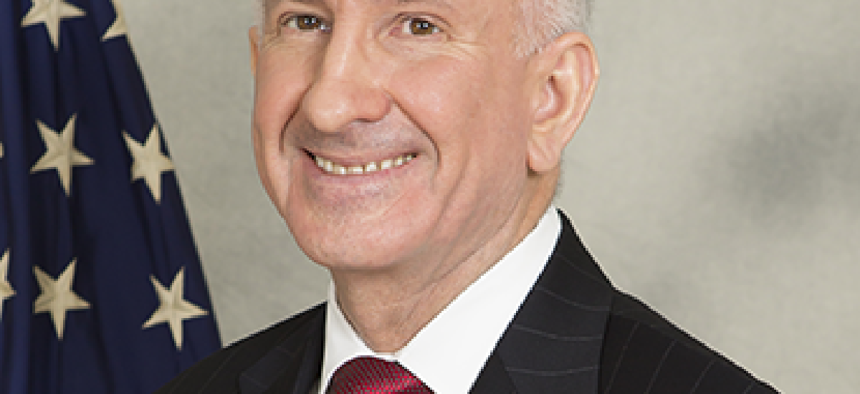GSA unveils unified acquisition strategy

the Federal Acquisition Service aims to be both a better provider and a trusted adviser.

FAS Commissioner Tom Sharpe wants to make GSA a more informed and better resourced one-stop shop for federal IT acquisition.
The General Services Administration, looking to cut through the confusion that sometimes clouds federal IT procurement, began a campaign to illuminate its development of new, centralized and electronic acquisition processes for federal agencies.
"Procurement is changing dramatically," Tom Sharpe, commissioner of GSA's Federal Acquisition Service, said at an Aug. 21 panel convened by the Association for Federal Resource Management (AFFIRM). "It's an important time for government procurement."
Sharpe said the cliché of dwindling budgets affecting federal operations has become a reality, and promised that GSA will provide more efficient ways for agencies to spend their money and their time, rather than winding through ever-more complex and increasingly duplicative contracts and contracting rules. "With shrinking budgets, there are fewer administrative dollars to handle acquisitions," he said. "Agencies are looking for help."
In his presentation, Sharp explained how GSA has crafted a three-year strategy to be a more informed and better resourced one-stop shop for federal agencies and their complex IT needs.
Sharpe brought his team of acquisition professionals with him to the forum to make his case that the agency was moving quickly and smartly to become an unbiased source for feds -- delivering not only IT goods and services, but also advice on how to buy them, even if an agency does not go with a GSA contracting vehicle.
In the last few weeks, the agency has been actively looking for venues like AFFIRM, through which it can speak to industry and federal customers about its initiative. The gathering, one GSA official said, marked a more-or-less official kickoff of the campaign to show its federal customers some of the changes it has been pushing over the last few months to make the federal acquisition process easier and more efficient.
"GSA is a light bulb shining in the darkness" of sometimes-murky federal acquisition rules and practices, said Jim Ghiloni, acting director of the agency's Center for Government-Wide Contracts. Along with Ghiloni, Sharpe brought Mary Davie, assistant commissioner for integrated services technology services; Amanda Frederiksen, assistant commissioner for strategy management; and Kevin Youel Page, assistant commissioner for common acquisition platform, to answer questions about the plan.
The agency has been unveiling various pieces of the strategy, but the Aug. 21 panel marked the first time they've been connected into a larger picture. "Over the last year," Sharpe said, "we've worked out four initiatives."
The first, he said, is category management -- something Sharpe initially announced in the spring. As part of this effort, GSA said in July that it planned to roll out a "hallway" concept for acquisition of IT gear, developing a team of experts offering guidance and best practices with the aim of ensuring pricing transparency and common standards. The hallways, Fredriksen said during the panel discussion, would launch at the end of September.
The next piece of the strategy, Sharpe said, is a common acquisition platform that allows customers to electronically meld contracting templates and sources that fit their needs. The CAP is both a platform and a strategy, and it will combine technologies and data on purchasing and pricing via a Web portal.
The third piece, he said, is modernizing GSA's sometimes creaky business models, which can date back decades.
And the fourth, Sharpe said, is expanding GSA's resources to provide customized information for federal projects. Like the insurance company that promises to search its competitors' policies for the best value for their customer, GSA will do much the same with a wide range of federal contracts. The idea, he said, is for agencies to come to GSA first before striking out on their own and creating a possibly redundant contract.
There are other efforts at GSA to cut through the arcane and imposing Federal Acquisition Rules, as well. Page said the agency is building a "turboFAR" that makes the FAR simpler, by quantifying a buyer's project and skills. The agency's 18F agile development initiative is also part of the strategy; Sharpe sees it as a consulting resource for agencies looking for expert advice.
Ultimately, the GSA officials said, they do not want their acquisition team to be seen as the end-all of government procurement, but rather a well-informed source that has thought through what federal agencies need and can connect them with it. "We're not the beginning and end of good practices," said Page.
Agencies "should think innovation when they think of GSA," Davies said, and GSA will help them find fellow innovators.
NEXT STORY: Another CIO heads for the door





